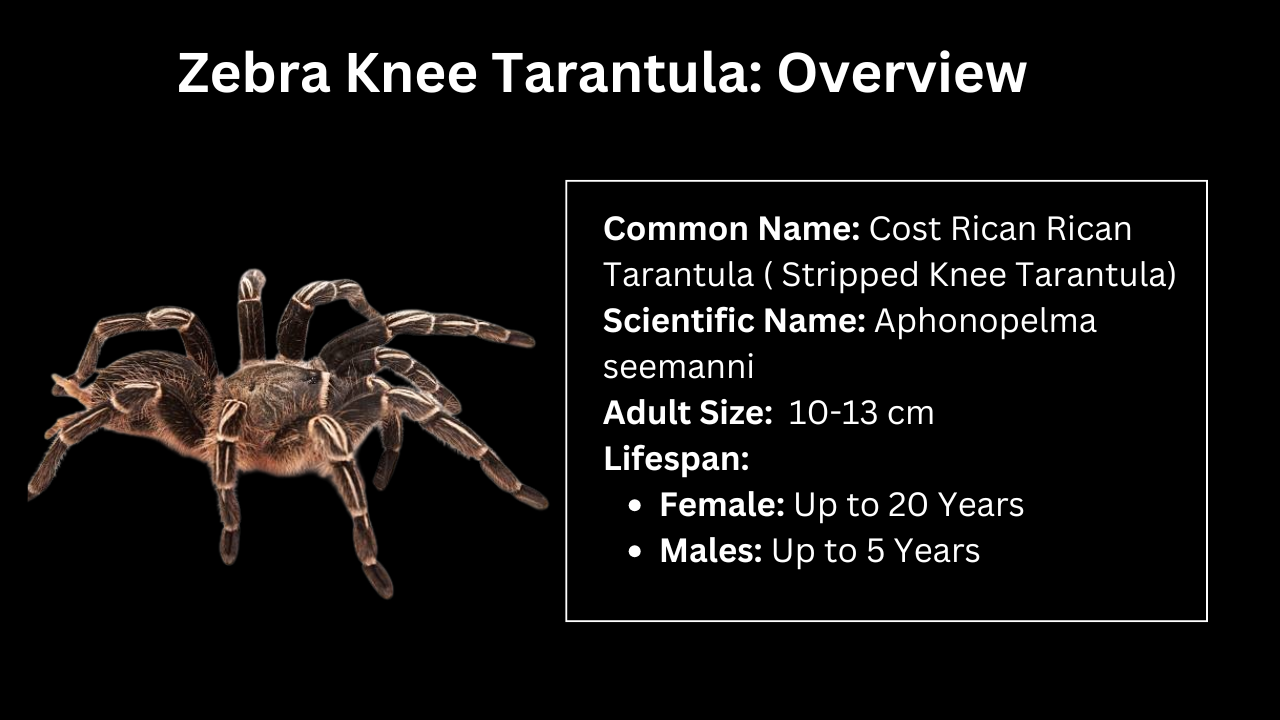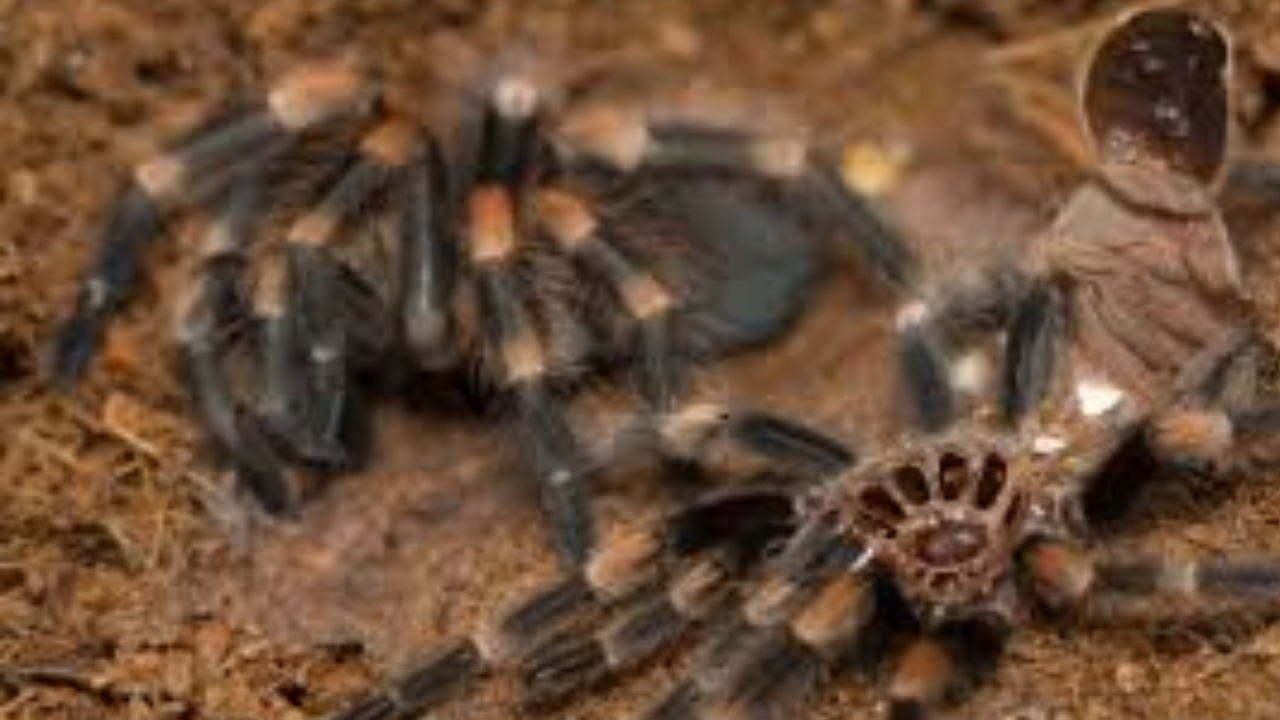Zebra Knee Tarantula Care Guide: Easy Tips for Beginners
Posted by TopFlight Dubia on Apr 6th 2024
Zebra Knee Tarantula: A Complete Care Guide
Are you ready to bring an eight-leg companion into your life?
The Zebra Knee tarantula is famous for its striking black and white striped legs. They are known for the calm demeanor and friendly nature which makes them a perfect pet.
However, when it comes to keep these tarantulas happy and healthy, you may have some questions in your mind:
- What do they eat?
- How do you set up their home?
- How do you make sure they thrive?
You may find yourself in confusion. So, to help you care for your pet, here is the complete Zebra Knee tarantula care guide by TopFlight Dubia to give it the life it deserves.
Zebra Knee Tarantula: Brief Overview
These creatures are known by different names like Costa Rican Zebra tarantula, Stripped Knee tarantula. They are found in most of western Costa Rica and other parts of Central America.
Their bold black and white striped patterns on their legs, give them a striking , zebra like appearance. Thus , their striking patterns make them stand out among the other tarantula species.

Size and Growth Explained
- Body length is 3.5” i.e, 9 cm.
- The diagonal leg span is 5-6” i.e., 15 cm.
- The growth rate is slow while tarantula takes year to reach maturity.
Behavior and Temperament
This species of tarantula is a calm and solitary animal. They interact with their surroundings in various ways, like:
- Camouflaging to blend into the environment
- Burrowing for protection
- Using vibrations to detect prey
- Spinning silk for burrows, webs, and communication
However, they are also extremely sensitive to their surrounding by showing signs of stress more often.
Since they can’t talk to us or make sounds like another animals, their way of showing signs of stress are very unique and specific.
Signs of Stress or Discomfort in Stripped Knee Tarantula
The common stress signs that a tarantula might show are:
- Aggressive behavior through hissing, lunging, or flicking hairs
- Excessive hiding
- Lethargy
- Loss of appetite
- Dull exoskeleton (Faded or discolored body)
- Rapid breathing
- Injuries or lesions
- Excessive webbing
Ideal Housing Setup for Tarantulas
If you are keeping these species of tarantula as a pet, it is important to build the suitable housing setup for them.
Enclosure Size
- You can use a 5-to-10-gallon aquarium.
- Choose a terrestrial enclosure that has more width than height.
The tank should be
- 3 times the spider’s leg span in length
- 2 to 3 times the leg span in width
Hides and Decorations
You can provide a nice-sized hide and a few decorations for your tarantula.
Temperature and Humidity
- You can keep the temperature in the enclosure between 70 to 85 ℉ (21 to 30 ℃).
- Keep the humidity at 75 to 80 percent.
Substrate
- An ideal substrate for tarantula can be a mix of vermiculite, soil, and peat moss to ensure better water retention and aeration.
- Make sure the soil is chemical-free.
- You can change the substrate every four to six months to support the growth of the tarantula.
- Fill the enclosure with the substrate at least ⅔ full so that the tarantula can burrow easily.
- Keep the substrate damp but not overly wet.
Maintaining Moisture
The damp substrate may lead to mold and mushrooms, so to avoid this:
- Let the substrate dry out between waterings.
- Overflow the bowl every few weeks.
- Wet one corner of the enclosure occasionally and let it dry out completely before wetting it again.
Water
- You can place a tiny water bowl inside the enclosure.
- Drip the water down the side of the enclosure as needed to keep the humidity levels stable.
By following the above steps, you can keep your tarantula happy and healthy.
What to Feed Striped Knee Tarantula?
The diet for spiderlings may be different for juveniles and adults. So, here is what you can include in your pet’s diet:
Spiderlings
- Feed the small crickets or Dubia roaches.
- If the prey is too large, kill it first before you offer it to your tarantula.
- Feed them 1-2 times a week until their abdomen becomes large.
Juveniles
- Offer them 1-2 small to medium crickets.
- Feed every 10-14 days.
- Feed them less often as their abdomen gets plump.
- Remove any uneaten prey 24 hours later.
Adults
- Give 5-6 large crickets every 3-4 weeks.
- Feed less often when their abdomen is plump.
Molting
Wait 2 weeks after a molt before feeding them.
|
NOTE: Always discuss with a veterinarian about the specific nutrient requirements for your pet tarantula. |
Common Health Problem And How to Treat: Molting

Molting is a process where the tarantula sheds its exterior shell to grow. As the exoskeleton becomes too tight and uncomfortable, so it needs to shed its outer shell to make room for its growing body.
Time
Molting can take anywhere from 15 minutes to a full da,y depending on the tarantula’s age and size.
How Often Molting Occurs
- Young spiders: Once a month.
- Old spiders - every year or two.
- Adult - only once after reaching maturity as their life span is short.
Signs of Molting in Tarantula
Let’s know the signs of molting that you can be aware of to help your pet during the process.
- Lying on its back or sides
- Reduced appetite
- Decreased activity
- Bald spot on their abdomen
- Increased Use of webbing
How To Take Care of a Molting Tarantula
Here are a few steps that you should keep in mind while caring for your pet in times of molting:
- Humidity is ideal, and the temperature is right.
- No uneaten prey in the tank.
- Never handle a molting tarantula, and right after it molts.
- Avoid frightening your tarantula.
Conclusion
Zebra Knee tarantula care is simple with the proper steps. First, use a wide, secure enclosure with damp substrates, hides, and 75-80% humidity. You can also feed small prey for spiderlings weekly, crickets for juveniles biweekly, and larger prey for adults monthly.
When dealing with a molting tarantula, make sure to avoid disturbing them, and leave prey during molting. Also, watch for signs of stress like hiding, lethargy, or appetite loss. You can also consider the help of a veterinarian for any concerns related to your pet’s care. Finally, follow the above basic steps to keep your tarantula pet happy and healthy for a long!

